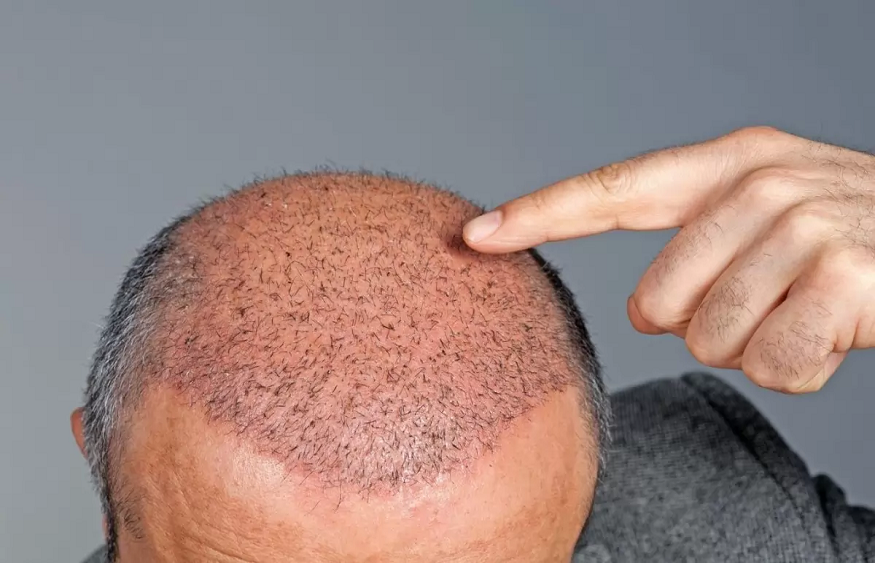The Journey of Hair Regrowth: A Year After Your Hair Transplant in Turkey

The journey to fuller, healthier hair often starts with understanding the best hair transplant in Turkey process. People worldwide choose Turkey for their hair transplants thanks to its reputation for high-quality care and affordable prices.
One Month Post-Transplant: First Signs of Growth
One month in, you may start spotting the initial changes. You can encourage new growth with proper scalp care—using the right shampoos and avoiding harsh chemicals.
Three Months Post-Transplant: Patient Expectations
Three months into the journey, new hair growth becomes more visible. Maintaining your newly transplanted hair—through a healthy diet, adequate hydration, and gentle care—is crucial at this stage.
Six Months Post-Transplant: Visible Changes
Six months post-transplant, you can start enjoying visible results. As you celebrate the halfway mark, reflect on your journey and the transformation you’ve started experiencing.
One Year Post-Transplant: The Final Outcome
A year after your transplant, you can expect to see the full results: increased hair density, consistent growth, and a fuller head of hair. It’s essential to continue looking after your hair to ensure the longevity of your transplant.
Potential Challenges in the First Year
The first year after a hair transplant can be exciting as you watch your new hair grow. However, it’s also crucial to be aware of potential challenges and side effects during this period.
Understanding the Shedding Phase
After a transplant, it’s common for the newly transplanted hair to fall out within the first few weeks. This phenomenon, known as “shock loss” or shedding phase, can be alarming, but it’s a normal part of the process. Your hair is simply making way for new, stronger strands to grow.
Managing Scalp Sensitivity and Discomfort
You might experience scalp sensitivity, discomfort, or numbness in the first few weeks after the procedure. This is a temporary side effect as your scalp heals from the operation. Over-the-counter pain medications or prescribed drugs from your doctor can alleviate these symptoms.
Dealing with Itching and Dryness
Itching and dryness are common side effects as the scalp begins to heal. To alleviate this, it’s recommended to use a gentle, hypoallergenic shampoo and avoid scratching the scalp. If itching persists, it’s advisable to contact your doctor, as this could indicate a healing issue or infection.
Addressing Swelling
Some swelling is expected in the first week after the procedure, especially around the forehead and eye area. Using cold compresses and sleeping with your head elevated can help reduce this swelling.
Monitoring for Infections
While rare, infections can occur after a hair transplant. Signs of infection can include persistent redness, pus, increased pain, or fever. If you experience any of these symptoms, seeking medical attention is crucial.
Assessing Hair Growth
By the third month, you should start seeing new hair growth. However, if your hair isn’t growing or you notice any irregularities, such as patchy growth, it might be worth speaking to your doctor. They can assess your progress and provide solutions if necessary.
Handling Emotional Impact
The first year after a hair transplant can also have an emotional impact. It can be frustrating if the growth is less quick and as full as you would like. It’s important to remember that everyone’s hair grows at a different pace, and the final results typically aren’t visible until a year after the procedure.
Your Lifestyle After a Hair Transplant
Adapting your lifestyle after a hair transplant can contribute significantly to the procedure’s success and your hair’s health in the long term. Here are key lifestyle changes you can make:
Diet and Nutrition
The importance of a balanced, nutritious diet cannot be overstated. Protein is essential for hair growth; include lean meats, fish, eggs, and vegetarian sources like legumes and nuts in your diet. Also, foods rich in omega-3 fatty acids, like salmon and flaxseeds, can promote healthier hair. Iron, zinc, and vitamins A, C, and E are other essential nutrients for hair health, so ensure they’re plentiful in your meals.
Hydration
Staying adequately hydrated is critical for overall health, including hair growth. Water helps to flush out toxins from your body, keeps your hair hydrated from the inside out, and aids in nutrient distribution to your hair follicles.
Physical Exercise
Regular exercise boosts overall health and improves circulation, stimulating hair growth by ensuring a healthy supply of nutrients to your scalp. However, be careful not to engage in strenuous physical activity immediately after the surgery, as it could affect healing.
Stress Management
High-stress levels can affect hair growth. Techniques like meditation, yoga, or other relaxing activities can help keep stress at bay. Regular sleep also plays a significant role in reducing stress levels and promoting healthier hair.
Hair Care Regimen
Adopt a gentle hair care regimen post-transplant. Avoid harsh chemical treatments, heat styling, and tight hairstyles that damage your hair. Also, opt for a soft, hypoallergenic shampoo and consider using a conditioner to keep your hair hydrated.
Sun Protection
Your scalp can be particularly sensitive after a hair transplant, especially to the sun. Wearing a hat or umbrella can protect your scalp from sun damage. However, avoid wearing tight hats that may dislodge the grafts in the initial weeks after surgery.
Why Results May Vary
Individual factors, including age, hair type, and general health, can influence your transplant’s success. Moreover, your surgeon’s expertise is critical, underscoring the importance of choosing the right medical team for the best hair transplant Turkey.
Reflecting on your hair transplant journey a year later, you will likely feel a newfound confidence. Embrace your new look, and enjoy the many benefits of your decision to undergo a hair transplant in Turkey.






